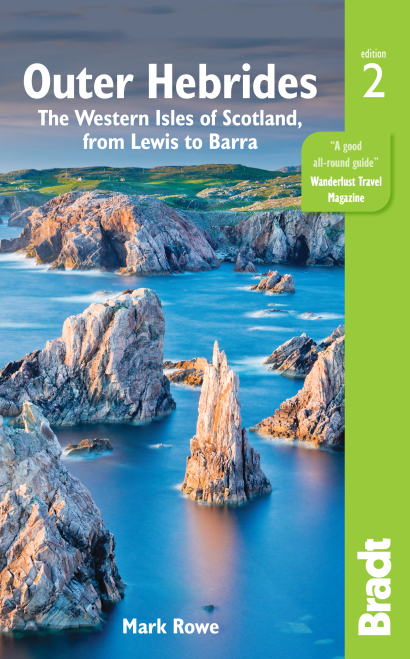When to visit
The islands on the edge of the British Isles offer great extremes – not only of interest throughout the year but also of weather. Late April to the end of June is probably the best time to visit the Outer Hebrides. The days quickly become much longer – although you are some way south of the midnight sun, it never gets completely dark in mid June – and wildlife, on a mission to breed and rear young, is at its richest.
April can often be a fine month for weather. A ridge of high pressure driven by anticyclones is a recognised, if not consistent, phenomenon across the islands at the end of May and the start of June.
July and August herald the striking spectacle of carpets of wild flowers along the grasslands, known as the machair, along the west coast. Summer also brings many outdoor events, such as Gaelic singing festivals, agricultural shows and local versions of Highland games. It can be hard to get accommodation at short notice during the summer holidays (Scotland’s school holidays run from the start of July to mid August), and there is even more pressure on car rental, with prices to match.
Autumn triggers a mass shift in the wildlife of the islands, with birds either migrating south or fleeing the approaching Arctic winter. The dark days of winter are not for the faint-hearted but bring a sporting chance of seeing the northern lights and are a superb time to see hardy wildlife toughing things out. At this season, time your visit for a break in the stormy weather and you may witness some of the most extraordinarily wild and battered landscapes you’ll ever see. The low winter sun can also show off the distinctively corrugated appearance of undulating moors and age-old farming furrows.
February and March are the prime time to witness the territorial behaviour of golden eagles, which pair-bond at this time, soaring together and locking talons in a breathtaking display. For walkers and cyclists, the same opportunities and guidance that are relevant elsewhere in the UK apply here: check the weather whatever the season, and acknowledge that a good day out in winter can be as wonderful as anything in summer.
Climate
The Outer Hebrides are regularly exposed to the extremes of wind and rain but – relatively speaking – enjoy a mild climate, with frosts rare.
Many places where you stay will helpfully print out the weather forecast for you to peruse over breakfast: it’s not uncommon for such forecasts to predict winds to be ‘minimum 2mph, maximum 58mph’. Not only can you experience all four seasons in one day here; stand on a headland in sunshine watching hail across the sea, and it can feel as though you can experience them all at once.
In Stornoway, winter temperatures average 7°C by day and lows of 1.8°C at night; spring time temperatures climb to 9.9°C in the afternoon with overnight lows of 3.8°C. Summer’s average high temperatures are 15.2°C, though they can reach the mid-20s°C any time between April and September, with lows of 9.3°C. Come autumn, temperatures typically drop to 11.5°C during the day and lows of 6°C.
Rainfall averages 46.2 inches (1,173mm), and Harris and Lewis – with the exception of Ness – have had significantly higher rainfall over the past 30 years than the southern islands; they are also wetter than most places on the mainland, with the exception of the western Highlands, the Lake District and Snowdonia.
On average, there are 1,234 hours of sunshine per year: Stornoway sees just 50 minutes sunlight per day in December. On Midsummer’s Day the islands enjoy 18 1/4 hours of daylight, the sun rising at 04.20 and setting at 22.35, though the nautical twilight continues all night, so it doesn’t ever really get pitch black.
More information
Discover more about the Outer Hebrides in our comprehensive guide:
